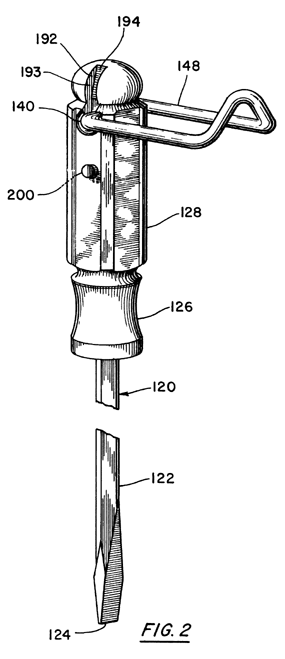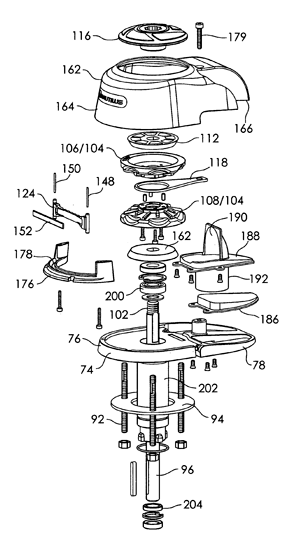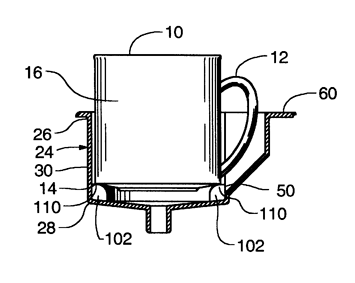UTILITY PATENT INFORMATION
Disclosure
Please have a disclosure of the invention ready for your next consultation; it will be held in the strictest confidence. It is also helpful if you complete the enclosed "Disclosure of Invention" before the discussion. If the invention is already on sale or in public use in the U.S., or described in a printed patent publication anywhere in the world, I need to know the date of such occurrence. No U.S. patent application can be filed on an invention more than one year after such sale, public use, or publication. Any pre-filing sale, public use or publication may bar filing of foreign applications. See the Disclosure page for details. See Disclosure.
Patentability Search
A basic search costs $600. and is usually adequate. A thorough search takes about three weeks, and costs from $600 to about $1200, depending upon complexity. I forward a copy of all patents located by the search to you, and include a report with my opinion as to the patentable merit of the invention. If the search indicates that the invention does not have sufficient merit to warrant the filing of a patent application, you incur no further expense. The search is optional. However, it is not advisable to file a patent application without a search. See Novelty Search.
Patent Application
If the search indicates the invention has patentable merit, and if you direct me to prepare a patent application, I ask for 25% of the estimated cost of preparing the application in advance, as a retainer or deposit. My fees are based upon the rate indicated in the attached schedule. Time to prepare a patent application varies greatly depending upon the degree of complexity.
I normally have the application ready for your signature within one to three months of receiving the retainer. I require that the balance of the fee, based upon total hours of preparation work and costs (postage, copies, etc), be paid when the application is signed and ready for filing in the PTO. An Information Disclosure Statement is usually filed with each patent application. The IDS is a listing of relevant reference documents uncovered by the search. See Patent Application.
Cost
Application costs will vary according to the complexity of the invention. I can quote you a fixed cost when I see your disclosure. Typical cost for me to prepare a simple mechanical case is $4800. A complex case can be up to about $7000. The U S Patent &Trademark Office Utility Filing fee is $64. for a small entity. The PTO Utility Search fee is $280. The PTO Utility Examination fee is $320. All three fees are required to be paid to the PTO at the time of filing the application. See the Agent Fees page and the PTO Fees page.
Patent Drawings
We do not need formal drawings to do the patentability search, but professionally prepared drawings that comply with detailed PTO specifications are needed if a patent application is to be filed. The drawings are prepared either by me or by a patent illustrator selected by me. Drawing cost is $150. per sheet. The inventor, if qualified, can prepare the drawings to my specification. See Sample Patent page 2, page 3, page 4.
Patent Pending
After all inventors have signed the patent application and paid the balance of the fees and costs, including the filing fee and illustrator fee (if any), the patent application is filed electronically over the Internet by a secure connection. The official filing date is the date the application is received in the Patent Office. You may then begin your marketing efforts; do not wait for the patent to issue. You may also begin applying "patent pending" to the invention and associated literature at that time.
Confidentiality of Disclosures
All disclosures are held strictly confidential by the agent. However, before you disclose your invention to others, you should have them sign a nondisclosure (confidentiality) and restriction of use agreement. See the Disclosure page.
First Examiner's Action
Most patent applications are rejected or objected to by the U.S. Patent Office in the first communication (Examiner's Action, or Office Action) from the examiner in charge of the application. The rejection must be accompanied by a statement of the reasons for the rejection.
I respond to the first Examiner's Action by studying the prior art cited by the examiner. Next, I will either amend the patent claims, or make suitable technical and legal arguments as to why the examiner is wrong in making the rejection.
Typically, the first Examiner's Action is received 1 to 1 1/2 years after the patent application is filed. In some cases, it will take longer. At that time, a response to the Examiner's Action is prepared. You will be billed for such response according to the fee schedule based on the actual hours of agent time required.
Publication of Application
The application is published by the USPTO during the first year of prosecution. There is no longer a fee for publication. You may delay publication if necessary for marketing reasons, but only if you don't intend to file a foreign application.
Second Examiner's Action
The application is usually approved after the response is filed. If not, a second Examiner's Action is made, and a second response is prepared; the fee schedule rate applies. If the response to the second Examiner's Action is still another rejection, your best option is to file a request for continued examination. This is usually approved, and requires a fee.
Further options are to appeal the rejection, re-file the application as a continuation, or abandon the application. There is no representation or guarantee that a patent application will result in a patent. I will often interview the Examiner by phone or in person, to reach an agreement on allowability of claims.
Patent Approved
Within a few months after the last response to an Examiner's Action, the PTO normally sends a Notice of Allowance, together with an Issue Fee for printing and publishing the patent. That amount must be paid by the inventor within three months of the Notice of Allowance, and failure to pay results in abandonment of the application. Also, there are associated fees for preparation of formal drawings, if needed.
Maintenance Fees
The U.S. government taxes patents. The first tax (called a "maintenance fee") is due 3 1/2 years after the date the patent is issued. If not paid on time, the patent expires (the USPTO will remind you). Additional taxes, in larger amounts, are due 7 1/2 and 11 1/2 years after the date the patent issued. Keeping track of the due dates and paying the maintenance fees is your responsibility. I will make every effort to alert the patent holder to an upcoming maintenance fee.
Foreign Patents
All foreign patent applications should be filed within one year of the filing date of the U.S. patent application. Caution: The right to file a patent application in foreign jurisdictions, such as Europe and Japan, may be lost if you sell or publicly disclose your invention anywhere in the world before a patent application is filed in the U.S. Note: your U.S. patent may be used to prevent importation into the U.S. of infringing devices or products manufactured abroad.
Design Patents
Where a device has a unique ornamental appearance, not required by it's function, it may qualify for design patent protection. Please see the Design Patent page.



